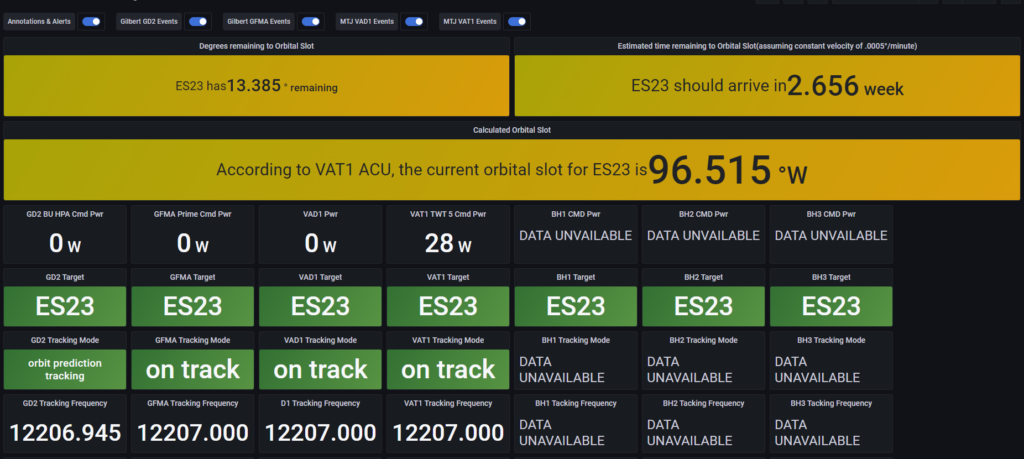Uptime Kuma and Fritzbox: Hack for Proactive Network Maintenance
Last updated on November 6th, 2023 at 05:05 am
If you’re looking for a reliable and efficient way to monitor your Fritzbox uptime, then Uptime Kuma is the perfect solution for you.
In an age where our digital lives are interwoven with our work, leisure, and communication, the Fritzbox has emerged as a central hub for home networking.
On the other hand, Uptime Kuma has become the go-to solution for monitoring and maintaining its uptime, ensuring that you’re always aware of any issues that may arise.
In this article, we will explore the significance of Uptime Kuma to Fritzbox, unraveling the essential tools it offers, and understanding how it revolutionizes network management in the modern era.
What is a Fritzbox?
A Fritzbox is a brand of routers and networking devices developed and produced by the German company AVM GmbH.
The Fritzbox is designed to provide users with a reliable and secure internet connection, as well as telephony functions.
It is a versatile device that can be used for both private and business purposes.
The Fritzbox is known for its user-friendly interface and powerful features, which make it a popular choice among consumers.
History and Popularity of Fritzbox.
AVM GmbH introduced the first Fritzbox in 2004, and since then, the brand has become increasingly popular in Germany and other parts of Europe.
The Fritzbox has gained a reputation for being a reliable and high-quality networking device, and it has won numerous awards for its innovative features and design.
Today, the Fritzbox is one of the most popular routers in Germany, with over 30 million units sold.
It is also gaining popularity in other parts of the world, including the United States.
Key Features of Fritzbox
Router functions: The Fritzbox is a powerful router that provides users with a fast and reliable internet connection.
It supports a wide range of internet connections, including DSL, cable, and fiber.
Telephony functions: The Fritzbox allows users to make phone calls over the internet (VoIP) and supports traditional landline telephony.
It also supports DECT wireless phones, which can be used throughout the home or office.
Security features: The Fritzbox is equipped with advanced security features, including a built-in firewall, WPA3 encryption, and parental controls.
User-friendly interface: The Fritzbox has a user-friendly interface that makes it easy to set up and manage the device.
It also has a range of customization options, allowing users to tailor the device to their specific needs.
Info LED: The Fritzbox has an Info LED that provides users with information about the device’s status, such as whether Wi-Fi guest access is currently being used.
The Importance of Uptime Monitoring
Uptime monitoring is the practice of continuously or periodically tracking the availability and performance of a computer network or website.
It is crucial for network reliability because it allows businesses and organizations to detect and respond to downtime quickly, minimizing the impact on users and customers.
Uptime monitoring helps ensure that network resources and services are available and reliable. This is essential for productivity and customer experience.
By monitoring uptime, IT teams can identify potential issues before they become major problems, allowing them to take proactive measures to prevent downtime.
Impact of Network Downtime on Users and Businesses
1. Frustration and lost productivity.
2. Lost revenue.
3. Damage to reputation.
4. Decreased customer satisfaction.
5. Legal or regulatory penalties.
Uptime Kuma as a solution to monitor Fritzbox uptime
Uptime Kuma is a powerful and user-friendly solution for monitoring Fritzbox uptime.
With its automated uptime monitoring process, Uptime Kuma can quickly detect and alert users to any downtime issues, allowing them to take proactive measures to prevent further downtime.
Uptime Kuma’s customizable alert system ensures that users are notified of downtime in a timely and effective manner, minimizing the impact on users and businesses.
By using Uptime Kuma to monitor Fritzbox uptime, users can ensure that their network is reliable and available, maximizing productivity and customer satisfaction.
What is Uptime Kuma?
Uptime Kuma is a self-hosted, open-source, and free uptime monitoring and alerting system.
It is a versatile tool that can monitor HTTP, HTTP with keywords, TCP, Ping, and even DNS systems.
Uptime Kuma is designed to provide users with a fancy, reactive, and fast UI/UX, making it easy to set up and manage the device.
It is a popular tool in the Website Monitoring category of a tech stack, with 35.9K GitHub stars and 3.1K GitHub forks.
Uptime Kuma is used by companies such as Core, WPDoze, and 2806-as-is, and developers on StackShare have stated that they use Uptime Kuma.
Benefits of using Uptime Kuma
Real-time monitoring: Uptime Kuma provides real-time monitoring of Fritzbox uptime, allowing users to detect and respond to downtime quickly.
Customizable alerts: As stated above, Uptime Kuma’s customizable alert system ensures that users are notified of downtime in a timely and effective manner, minimizing the impact on users and businesses.
User-friendly interface: Uptime Kuma has a user-friendly interface that makes it easy to set up and manage the device. It also has a range of customization options, allowing users to tailor the device to their specific needs.
Multi-language support: Uptime Kuma offers multi-language support, making it accessible to users worldwide.
Ping chart: Uptime Kuma provides a ping chart that allows users to visualize the performance of their network over time.
Certificate info: Uptime Kuma provides certificate info, allowing users to monitor the status of their SSL certificates
Setting up Uptime Kuma with Fritzbox
To install and configure Uptime Kuma, follow these steps:
1. Clone the Uptime Kuma repository from GitHub using the command ‘git clone https://github.com/louislam/uptime-kuma.git’.
2. Navigate to the cloned directory using the command ‘cd uptime-kuma’.
3. Run the command ‘npm run setup’ to install the necessary dependencies.
4. Start the Uptime Kuma server using the command ‘node server/server.js’ or run it in the background using PM2 with the command ‘pm2 start server/server.js –name uptime-kuma’.
5. Access the Uptime Kuma web interface by navigating to ‘http://localhost:3000’ in your web browser.
Step-by-step guide to get started
To get started with Uptime Kuma and Fritzbox, follow these steps:
1. Install and configure Uptime Kuma on your server or computer using the steps outlined above.
2. Log in to your Fritzbox router and navigate to the “Internet” tab.
3. Click on “Online Monitor” and then “Add New Monitor”.
4. Enter the IP address of your Uptime Kuma server and select the monitoring type (e.g., HTTP, TCP, Ping).
5. Configure the monitoring settings as desired, including the monitoring interval and alert settings.
6. Save the monitor and repeat the process for any additional monitors you wish to set up.
Troubleshooting tips for common setup issues
If you encounter issues when setting up Uptime Kuma with Fritzbox, try the following troubleshooting tips:
1. Ensure that your Uptime Kuma server is running and accessible from your Fritzbox router.
2. Check that the monitoring settings in Fritzbox are configured correctly, including the IP address and monitoring type.
3. Verify that your firewall settings allow traffic to and from your Uptime Kuma server.
4. Check the Uptime Kuma logs for any error messages or issues that may be preventing the monitoring from working correctly.
5. If you are using a reverse proxy, ensure that it is configured correctly to handle WebSocket traffic.
Monitoring and Analyzing Uptime Data
You can view uptime percentages for individual monitors or the entire network, allowing you to track the overall reliability of your network.
Uptime Kuma also provides historical data, allowing you to view uptime trends over time and identify potential issues before they become major problems.
You can view uptime data in real time, making it easy to detect and respond to downtime quickly.
How to interpret the uptime data and what it means for your network
Uptime percentages provide a measure of how often your network is available and can be used to track the overall reliability of your network.
For example, an uptime percentage of 99.9% means that your network was available for 99.9% of the time during a given period.
Historical uptime data can identify trends and patterns in network availability, allowing users to identify potential issues before they become major problems.
By interpreting uptime data, users can gain valuable insights into the performance of their network and take proactive measures to optimize uptime.
Recommendations for maintaining a reliable Fritzbox network
1. Regularly update and maintain your Fritzbox router to ensure it is secure and reliable.
2. Use strong passwords and two-factor authentication to protect your Fritzbox from unauthorized access.
3. Implement firewall rules to block unauthorized traffic and protect your network from security threats.
4. Regularly monitor Fritzbox uptime with tools like Uptime Kuma to detect and respond to downtime quickly.
5. Use Fritzbox’s built-in security features, such as WPA3 encryption and parental controls, to enhance network security.
Conclusion
Uptime Kuma can contribute to network security by identifying anomalies in network uptime data that may indicate security issues.
By following best practices for optimizing network uptime and using Uptime Kuma effectively, you can maintain a reliable and secure network.
Additionally, understanding the basics and features of Fritzbox routers can help you maximize the potential of your network and troubleshoot common issues.
With the help of resources such as AVM International and online guides, you can embark on a journey of optimizing your network performance.







